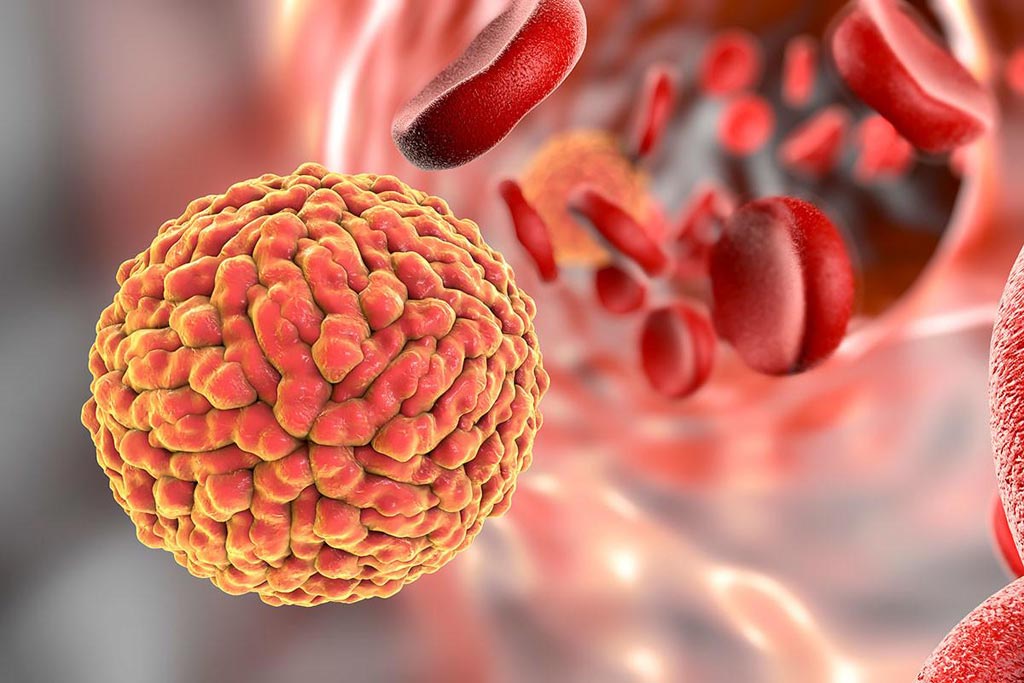Fetal MRI Superior for Detecting Zika Brain Damage
By MedImaging International staff writers
Posted on 18 Oct 2017
Fetal magnetic resonance imaging (MRI) should be used in addition to ultrasound (US) to reveal the extent of brain damage caused by the Zika virus in the developing brain, claims a new study.Posted on 18 Oct 2017
Researchers at Children's National Health System (CNHS; Washington, DC, USA) conducted a longitudinal neuroimaging study that enrolled 48 pregnant women exposed to the Zika virus in the first or second trimester, and whose infection was confirmed by reverse transcription polymerase chain reaction (PCR) and/or Immunoglobulin M testing. Of the study participants, 46 live in Barranquilla (Colombia), where Zika infection is endemic, and two women live in the Washington DC (USA) region and were exposed to Zika during travel elsewhere.

Image: An illustration of Zika virus in the blood (Photo courtesy of SPL).
All of the women underwent at least one diagnostic imaging session while pregnant, receiving an initial MRI or US at 25.1 weeks gestational age, with 36 women undergoing a second MRI/US imaging pair at roughly 31 weeks gestation. Three of the pregnancies (6%) were marked by abnormal fetal MRIs. One fetus had heterotopias and abnormal cortical indent; but the ultrasound taken at the same gestational age showed its brain was developing normally. Another fetus had parietal encephalocele and Chiari malformation Type II, with US also detecting these brain abnormalities.
A third fetus had a thin corpus callosum, abnormally developed brain stem, temporal cysts, general cerebral and cerebellar atrophy, and subependymal heterotopias. US revealed major ventriculomegaly and a fetal head circumference that decreased sharply from the 32nd to 36th gestational week, a hallmark of microcephaly. After the children were born, the infants underwent a follow-up MRI without sedation and another US. For nine infants, the US revealed cysts in the choroid plexus or germinal matrix, and one infant's US after birth showed lenticulostriate vasculopathy brain lesions. The study was presented at the annual IDWeek meeting, held during October 2017 in San Diego (CA, USA).
“MRI and US provide complementary data needed to assess ongoing changes to the brains of fetuses exposed to Zika in utero,” said lead author and study presenter CNHS fetal/neonatal neurologist Sarah Mulkey, MD, PhD. “In addition, our study found that relying on ultrasound alone would have given one mother the false assurance that her fetus' brain was developing normally, while the sharper MRI clearly pointed to brain abnormalities.”
Zika virus is a member of the Flaviviridae family, of the genus Flavivirus, and is transmitted by the daytime-active Aedes mosquitoes. In adults, the virus causes a mild illness known as Zika fever. Locally transmitted Zika virus was first reported in Brazil in May 2015, and since then health authorities have estimated that around a million suspected cases have occurred. Brazilian health authorities also observed a significant increase in the number of detected cases of microcephaly and Guillain-Barré Syndrome affecting fetuses and newborns.
Related Links:
Children's National Health System












.jpg)

